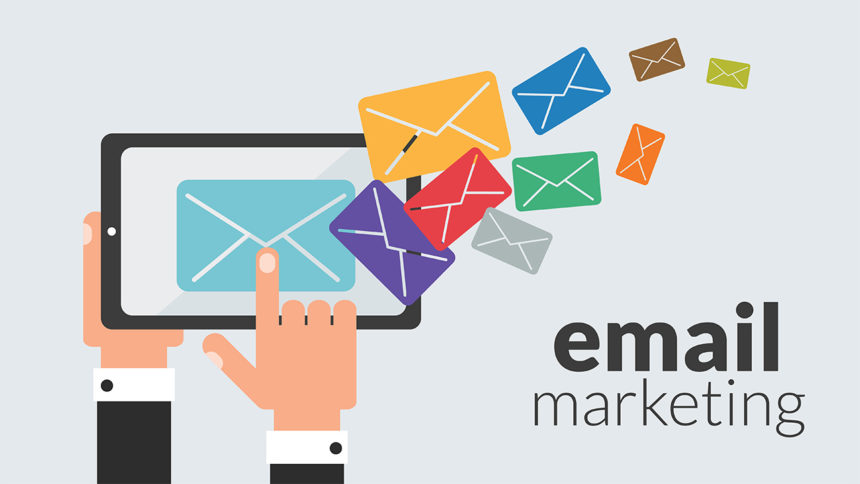Most small businesses either already know the importance of drip marketing and a powerful email campaign or they end up missing out on a huge number of potential customers. Having a successful business these days means keeping track of a growing list of customer data. Many leading POS systems, CRM tools, lead generating websites, and sales funnels collect information such as name, email, phone number, and even birthday. Some systems and integrations capture more than that, but let’s keep this simple! In this article, we’ll explain how you can start building better email campaigns.
So, you have the data, but how do you use it?
All the information your company collects from its customers can be organized in a logical way to help you target your customers for return business. These lists can also be used in your advertising and remarketing strategies. For example, if you have a list of 500 customer emails exported from your POS, it would make sense to group customers who spent above a set threshold separately from customers who didn’t meet that minimum. Having a simple way to target frequent customers or major buyers is important when running email campaigns with the goal of selling more product.
Target Your Email Recipients
Knowing which group to send your email to is a major step in creating a successful email campaign. Email campaigns that are the most successful know the recipient quite well. You can target users based on spending habits, shopping or browsing habits, previous purchases, etc. Creating an email and sending it to all customers isn’t effective if half of those customers aren’t interested in the content. If you have a group of customers that love one product or service your company offers, but doesn’t show much interest in other services, use that to send them a customized email they will be more likely to click through.
Customers Like Personalization
If you have the data, use it. Most popular email marketing tools including MailChimp (yes, even the free account) allow you to add the customer’s name when adding them to a list. Be sure when you send your email to include the customer’s name somewhere in the message content. Many campaigns we have seen add style (custom color, bold, italics, etc) to the customer name to make it more noticeable. But please, no Comic Sans.
If your company is a B2B company where you mostly interact with customers based on their company, just add that person’s company name in place of their real name when subscribing them to a list!
Use Simple Layouts
Keep in mind that customers will most likely open your email on their phone. The design you use for your email campaign should be simple and not include flashy graphics, advanced animations, large images, or other in-your-face elements. Keep your design looking professional and easy to navigate while also providing useful information and content the targeted group would want.
Most importantly: Test the email before sending it. Make sure it works on mobile devices as well as desktops!
Concise Paragraphs
It’s easy to type several paragraphs about your company, product, or service. However, the customer doesn’t want to read a lot of text. Try to use concise paragraphs and show off your superior grasp of the English language when writing it! In total, most of the campaigns we’ve seen have an average of one paragraph of text.
Call To Action
Before sending your email, sit down and plan the content. You’ll need a powerful subject, an outstanding header, a concise description, some eye-catching graphics, and most important, a persuasive call to action.
What’s the point of sending the email if you don’t include a call to action that gets the recipient to do more than open the email? This call to action can be anything from buying a product, clicking a link, taking a survey, or whatever else. Just make sure you include it.
Tracking Email Links with Google Analytics
Google Analytics is a powerful analytics platform that can track just about anything. If you haven’t already, look in to Google Analytics and see how it can help you understand your customers and how people are interacting with your site. If your site is currently being tracked with Google Analytics, you can easily create links to use in your email campaigns that allow GA to see the data and apply it to your current dashboard.
Google Analytics URL Builder: https://ga-dev-tools.appspot.com/campaign-url-builder/
The above image explains what each step of the builder process means. When you’re finished, you will have a link that can be copy and pasted into your email links, buttons, or images.
Note: A URL builder can be used for online ad campaigns and mobile ad campaigns.
Further Reading
https://www.campaigner.com/resources/pdf/33-tips-to-maximizing-email-mark.pdf
http://www.verticalresponse.com/blog/dissecting-a-bloody-good-email-newsletter/
https://econsultancy.com/blog/64997-email-marketing-cta-design-five-good-vs-six-bad-examples/
http://grasshopper.com/blog/9-email-newsletters-people-actually-read/
https://blog.hubspot.com/marketing/email-newsletter-mistakes
